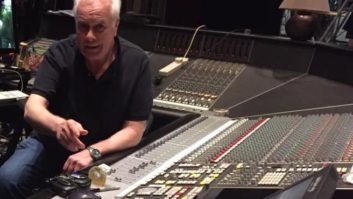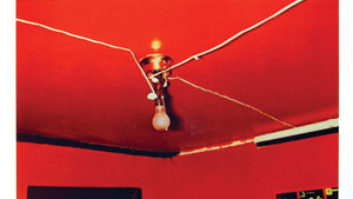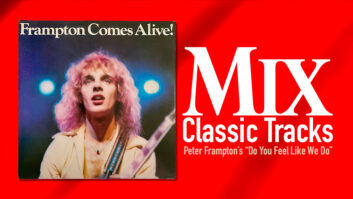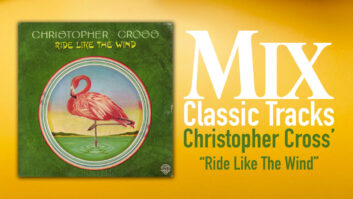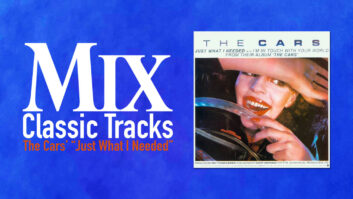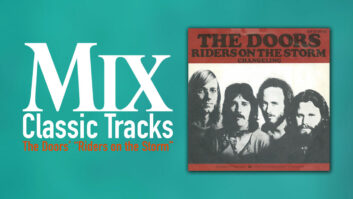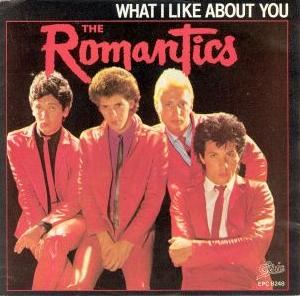
Sometimes the rock ‘n’ roll myth — you know, a group of working-class kids harness their passion for music and use it to escape factory jobs, Popov Vodka and eviction notices — actually comes to pass. Today, when each tossed mane seems market-tested, it may be hard to recall a time when everything about a band was an honest reflection of the environment that spawned them, the territory they were staking out, or both. In fact, by the late 1970s, when a small herd of misfits formed a group in their hometown of Detroit, those days were already numbered. But The Romantics, strongly influenced by both the British Invasion and the hard rock that sprang from the streets of Motor City, were able to summon some coming-of-age magic of their own and contribute to the era’s soundtrack with songs like “Talking in Your Sleep,” “One in a Million” and this month’s “Classic Tracks,” “What I Like About You.”
Valentine’s Day, 1977. You might not remember what you were doing at the time, but Wally Palmar, Jimmy Marinos, Mike Skill and Richie Cole certainly do. They were becoming The Romantics. Skill — who churned out the catchy guitar refrain that’s one of the handful of hooks that makes “What I Like About You” as engaging to members of Generation X-plus as it was to the band’s contemporaries when it was released in 1979 — remembers those days well.
“People always make The Beatles comparison — the shouts, the harmonica solos, the catchy but not virtuoso guitar playing — but we were equally influenced by The Kinks and The Yardbirds,” Skill says. “There were a lot of high-end, top-notch guitar players in Detroit at the time who could cover every lick that Jimmy Page recorded for Led Zeppelin. The way we saw it, those guys were overqualified for the sound we were looking to create.
“I played guitar and bass, and Wally was another simple, straight-ahead guitar player. With us, it was more of an attitude. We liked simple guitar chords and fewer solos, more attack and melody in the playing. George Harrison was definitely an influence in that way, but so was Chuck Berry.”
Their first recording was a single — both sides penned by the group — that The Romantics leveraged into an East Coast tour. As they built a following, the band drew mostly positive notices from the press, who shepherded them into the burgeoning “new wave” category they were never completely comfortable with. After signing a contract with CBS offshoot Nemperor Records, The Romantics headed down to Miami to record their eponymously titled debut album.
“Everyone wanted to record in Criteria at the time, but we couldn’t get in there,” Skill says. “I don’t remember who had it locked out. We were really excited about the record, though. We’d done pre-production for a month in Detroit and were ready to go. Peter Solley, who was working out of Australia, produced that album. We wanted to have the pop edge covered and felt that Peter, who orchestrated television commercials and was a good piano player, could help us refine our harmonies. Growing up with the music of Detroit — The MC5 and Bob Seger, among others — in our ears, we had the raw side, the high-energy attack down. We knew that Peter could add something to the arrangements and make sure that the melodies and harmonies were right.
“‘What I Like About You’ was an idea that we developed as a band. I came up with the guitar part,” Skill continues. “We usually wrote songs using just three or four chords in a sparse, straight-ahead, MC5 way. I wanted a guitar hook that was along the lines of [Van Morrison/Them’s] ‘Gloria’ or [The Kingsmen’s] ‘Louie, Louie.’ I could always come up with something when Jimmy was playing the drums. We grew up together and started the group. Jimmy also sang the lead vocal on ‘What I Like About You.’
“We wanted to convey the simplicity of ’50s music and also throw in the influence of The Animals, The Beatles and the Stones. We were one of the first bands [of the new wave era] — along with Tom Petty — to use Rickenbacker and Gretsch guitars over here. When we got signed, we switched to Hiwatt amplifiers, which have a sound that’s similar to Fenders.
“After we developed the groove and I added the guitar intro, Jimmy came up with some lyrics. I wanted to add a few ‘Heys!’ along the lines of The MC5, and as The Yardbirds had done in ‘Over, Under, Sideways, Down.’ I also liked the way Chuck Berry used ‘Uh, huh!’ in ‘Back in the U.S.A.,’ so we threw that in there, as well.
“By the time we went into Coconuts — the Miami Beach studio we booked when we couldn’t get into Criteria — we were ready to go. The entire album took about six weeks to track and mix. Studios were much simpler in 1979. Coconuts had an MCI board, an MCI 16-track recorder, the usual Neumann microphones and a few reverb units. We eventually did work at Criteria when we recorded ‘Talking in Your Sleep’ several years later, and they had a similar setup.
“We tracked the band together, with Steve Brown at the board, in a large room. We all used 4×12, 100-watt Hiwatt amps, including our bass player. The drums were set up on a platform, and I remember that we made a drum booth out of 4×8 panels using gaffer tape to hold them together. Jimmy had to climb in and out to get to his drum set, but the sound was great.
“I was influenced by Pete Townshend, and since I only heard one guitar on Who records, I didn’t want to record any overdubs. I tracked with a John Lennon Rickenbacker, and the sound was thin so we tripled it. Before we knew it, the album was out and ‘What I Like About You’ was a huge hit.”
Brown was mixing an album by the new British rock band Vibration White Finger when he took some time to reminisce about The Romantics. “I was engineering quite a lot of cool stuff in London at the time, mainly guitar bands, which got me noticed,” Brown remembers. “One day, I received a call from the newly recruited Romantics producer Pete Solley, who wanted me to fly to Miami to record and work on their first album.
“The guys were a great deal of fun to work with and had a great sense of verve, style, commercialism and professionalism,” he continues. “Coconuts was run by Shirley Kaye. As per usual, the whole band was stuck in the same room with the drums separated by a custom-built Plexiglas booth, as Mike described. I think Wally did guide vocals, although Jimmy did the finals. We recorded into an MCI desk. Not a great deal of overdub work on this one, if I remember rightly — the mix was pretty straightforward. We used compression, of course, and pushed as much level onto 30 ips quarter-inch tape as possible. ‘What I Like About You’ stood out as being a hit instantly.”
After The Romantics project, Brown went on to produce some very pop projects before returning to harder-edged bands. “I was offered the job of producing the British band ABC,” he says, “and this attracted the attention of George Michael, who asked me to produce the first Wham! album, which hit the British album charts at Number Two and stayed there for quite a while. That record went on to be very successful worldwide, and for a very long time, it kept me from working with my beloved guitar bands. I took a short break to regroup and then discovered a band called the Southern Death Cult. We changed their name to The Cult, released ‘She Sells Sanctuary,’ recorded the Love album and — bingo — I was back in the band market again.”
Although the members of The Romantics are spread across the country now — Skill moved to Portland in 1997 so that his wife, a dancer who was working with The Tubes when they met, could be closer to her family — the group still comes together to make records and tour. “We do 250 to 300 shows a year,” says Skill. “Stevie Van Zandt has a new label that we’re working with, and we’re also traveling with his Underground Garage tour.”
Skill has a Pro Tools studio in his home that he uses to develop new material. He’s also a parent who shoulders the responsibilities that come with that gig. But given the magic they were able to capture, and the evidence of the continuing spell of “What I Like About You,” which has been used in numerous commercials, soundtracks and, for four years, a television show of the same name on the WB network, it’s easy for The Romantics to shed a quarter-century and travel back to a time when a three-chord song catapulted them out of Detroit and into the hearts of millions of rock ‘n’ roll fans.
